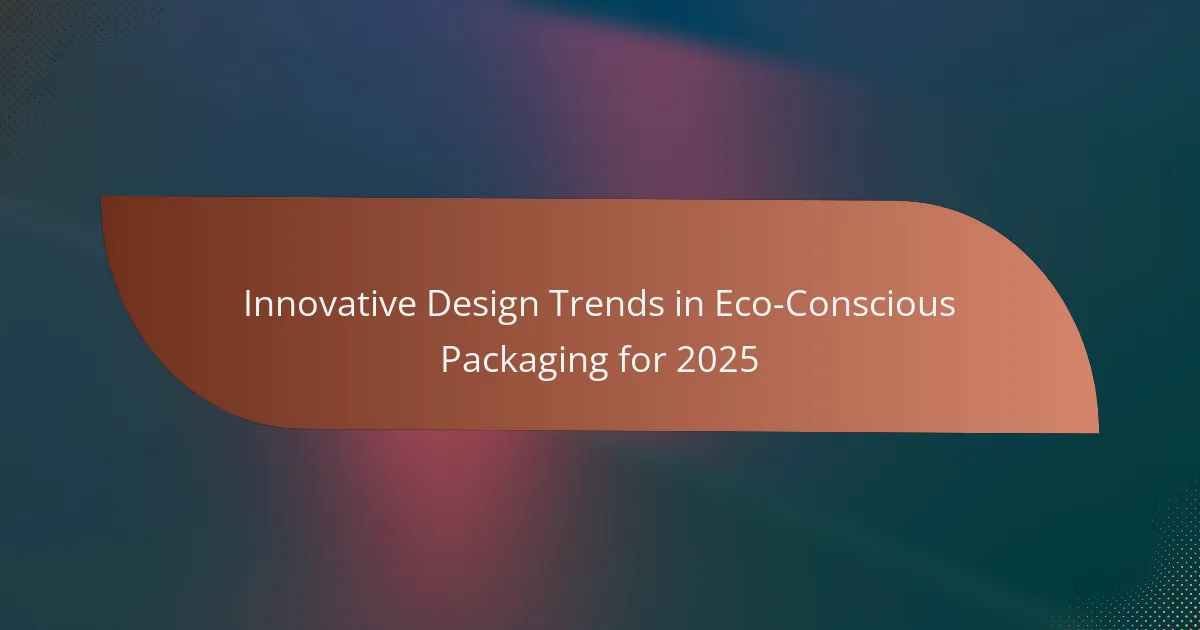As we approach 2025, innovative design trends in eco-conscious packaging are set to revolutionize the industry by emphasizing sustainability, functionality, and consumer engagement. Key trends include the use of biodegradable materials, minimalist aesthetics, smart packaging technologies, and reusable solutions, all designed to minimize environmental impact while enhancing the user experience.
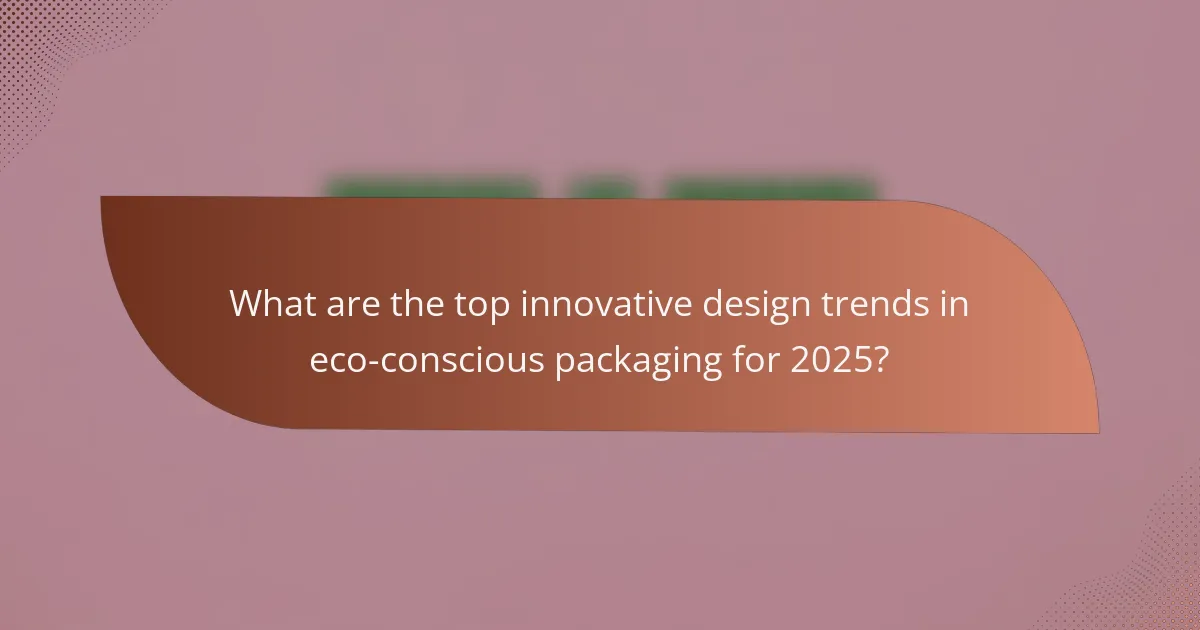
What are the top innovative design trends in eco-conscious packaging for 2025?
In 2025, the leading innovative design trends in eco-conscious packaging focus on sustainability, functionality, and consumer engagement. These trends include biodegradable materials, minimalist design, smart packaging technology, reusable packaging solutions, and plant-based inks, all aimed at reducing environmental impact while enhancing user experience.
Biodegradable materials
Biodegradable materials are gaining traction as a primary choice for eco-conscious packaging. These materials break down naturally over time, reducing landfill waste and environmental pollution. Common examples include plant-based plastics, paper, and compostable films, which can decompose in a matter of months under the right conditions.
When selecting biodegradable options, consider the specific conditions required for decomposition, such as temperature and moisture levels. It’s crucial to ensure that the materials meet local regulations regarding compostability to avoid contamination in recycling streams.
Minimalist design
Minimalist design emphasizes simplicity and functionality, reducing excess packaging and materials. This approach not only lowers production costs but also appeals to consumers who prefer clean, straightforward aesthetics. Brands can achieve this by using fewer colors, straightforward graphics, and compact shapes.
To implement minimalist design effectively, focus on essential information and branding elements. Avoid unnecessary embellishments that can complicate recycling processes, and consider using single-material packaging to enhance recyclability.
Smart packaging technology
Smart packaging technology integrates digital features to enhance user interaction and product tracking. This can include QR codes, NFC tags, and sensors that provide information about product freshness or sustainability. Such innovations can engage consumers and promote transparency in sourcing and manufacturing processes.
When incorporating smart technology, ensure that it aligns with your sustainability goals. Opt for recyclable or biodegradable components for the technology itself, and educate consumers on how to utilize these features effectively.
Reusable packaging solutions
Reusable packaging solutions are designed for multiple uses, significantly reducing waste. This trend encourages consumers to return packaging for refills or repurpose it for other uses. Examples include glass jars, durable containers, and tote bags that can be reused for shopping.
To promote reusable packaging, consider implementing a deposit return system or loyalty rewards for customers who return their packaging. Clearly communicate the benefits of reusability to encourage consumer participation and enhance brand loyalty.
Plant-based inks
Plant-based inks are an eco-friendly alternative to traditional petroleum-based inks, offering reduced environmental impact during production and disposal. These inks are made from renewable resources like soy or vegetable oils, which are less harmful to the environment and provide vibrant colors.
When choosing plant-based inks, verify their performance and durability for your specific packaging needs. Ensure that they comply with relevant safety standards, especially for food packaging, to maintain consumer trust and product integrity.
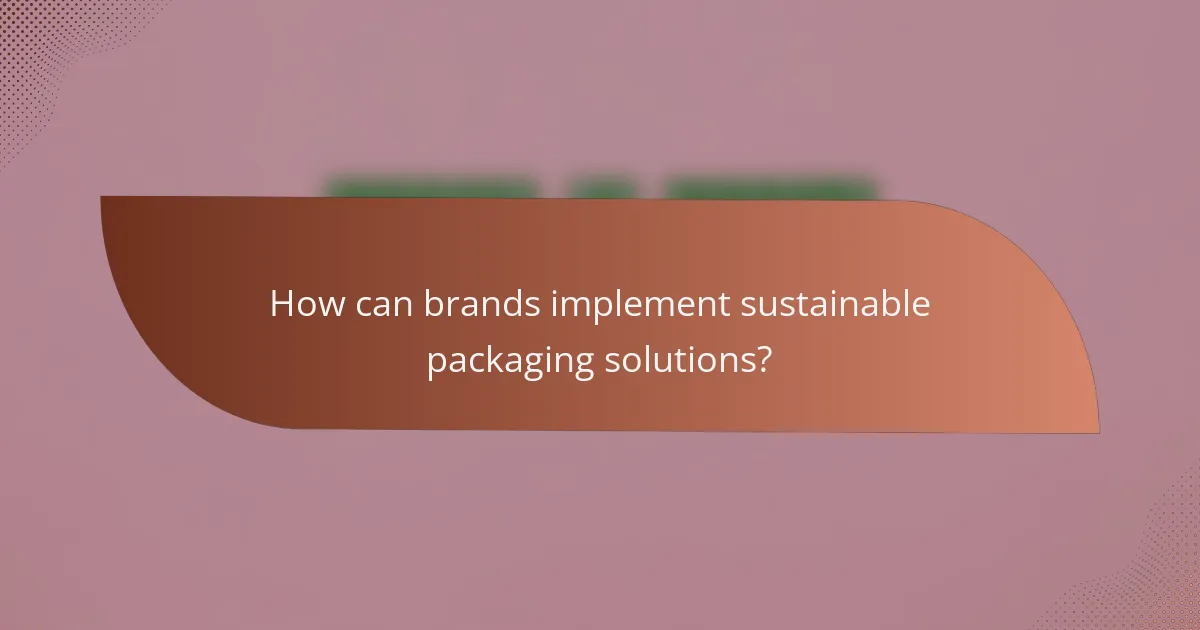
How can brands implement sustainable packaging solutions?
Brands can implement sustainable packaging solutions by focusing on materials, design, and processes that minimize environmental impact. This involves selecting eco-friendly materials, optimizing packaging design for efficiency, and engaging in practices that promote recycling and waste reduction.
Conducting lifecycle assessments
Conducting lifecycle assessments (LCAs) allows brands to evaluate the environmental impact of their packaging from production to disposal. This process involves analyzing resource consumption, emissions, and waste generation associated with each packaging option.
Brands should consider using LCA tools that provide insights into various packaging materials and their environmental footprints. This data can guide decisions toward more sustainable options, such as biodegradable or recyclable materials.
Collaborating with eco-friendly suppliers
Collaborating with eco-friendly suppliers is crucial for sourcing sustainable packaging materials. Brands should seek suppliers who prioritize sustainability in their production processes and offer certifications like FSC or Cradle to Cradle.
Establishing strong partnerships can lead to innovations in packaging design and material use. Brands may also negotiate bulk purchasing agreements to reduce costs while supporting sustainable practices.
Utilizing consumer feedback
Utilizing consumer feedback helps brands understand preferences and expectations regarding sustainable packaging. Engaging customers through surveys or focus groups can reveal insights into what eco-friendly features resonate most.
Brands should analyze this feedback to refine their packaging strategies, ensuring they align with consumer values. Implementing changes based on feedback can enhance brand loyalty and attract environmentally conscious customers.
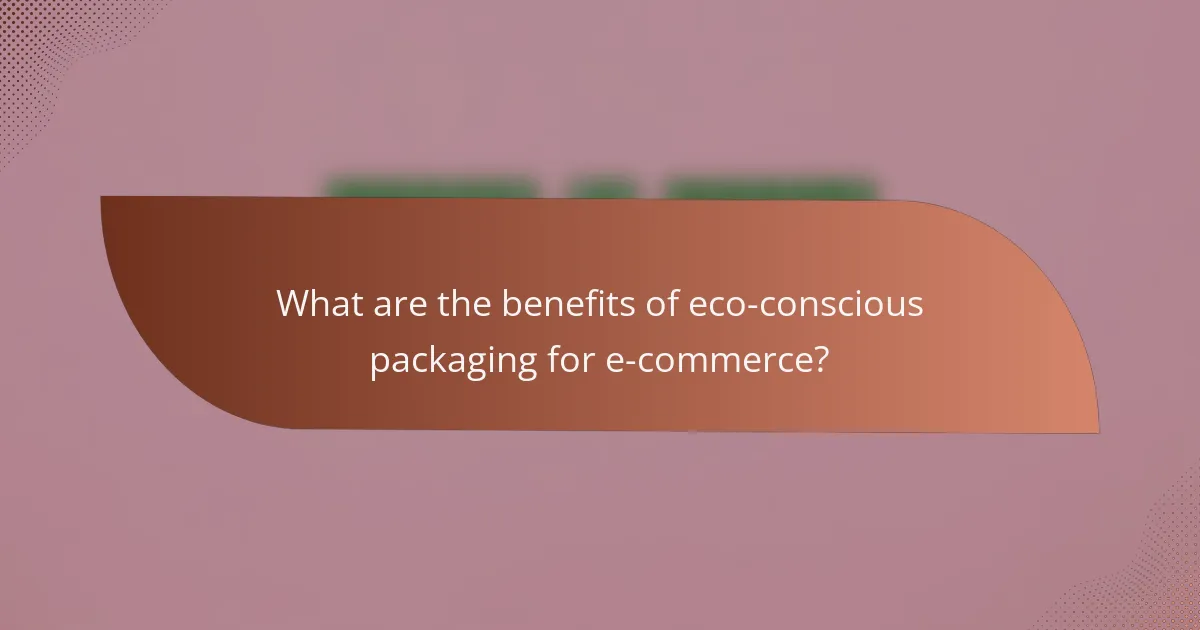
What are the benefits of eco-conscious packaging for e-commerce?
Eco-conscious packaging for e-commerce offers numerous advantages, including enhanced customer satisfaction and a positive environmental impact. By prioritizing sustainable materials and practices, businesses can attract eco-aware consumers and reduce their overall ecological footprint.
Enhanced brand loyalty
Utilizing eco-conscious packaging can significantly boost brand loyalty among consumers who prioritize sustainability. When customers see that a brand is committed to environmentally friendly practices, they are more likely to develop a strong emotional connection and repeat purchases.
Brands can enhance loyalty by sharing their sustainability story through marketing channels. Highlighting the use of recycled materials or biodegradable options can resonate with consumers, encouraging them to choose your products over competitors.
Reduced carbon footprint
Eco-conscious packaging contributes to a reduced carbon footprint by minimizing waste and utilizing sustainable materials. This approach often involves using renewable resources, which can lower greenhouse gas emissions associated with production and disposal.
Companies can further reduce their carbon impact by optimizing packaging sizes to fit products more efficiently, thus decreasing shipping emissions. For instance, using smaller boxes can lead to lower transportation costs and reduced fuel consumption.
Compliance with regulations
As environmental regulations become stricter globally, adopting eco-conscious packaging can help businesses stay compliant and avoid potential fines. Many regions are implementing laws that require reductions in plastic usage and increased recycling rates.
Staying ahead of these regulations not only mitigates risks but can also enhance a brand’s reputation. Companies that proactively adopt sustainable practices are often viewed more favorably by consumers and regulators alike, fostering trust and credibility in the marketplace.
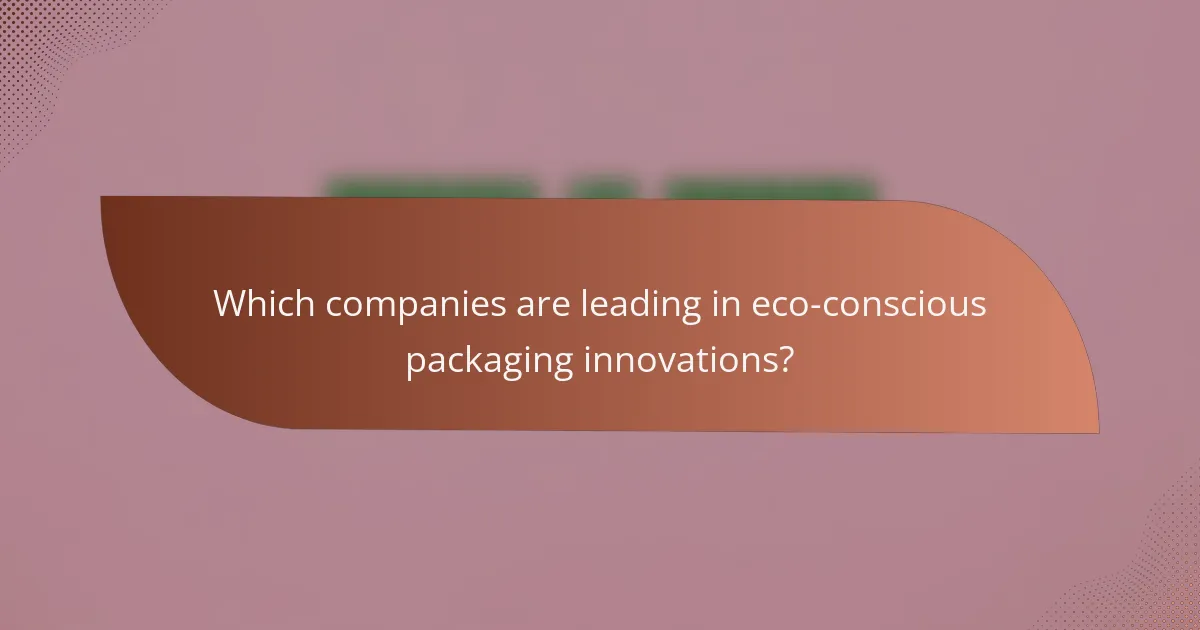
Which companies are leading in eco-conscious packaging innovations?
Several companies are at the forefront of eco-conscious packaging innovations, focusing on sustainability and reducing environmental impact. Notable leaders include Unilever, PepsiCo, and Procter & Gamble, each implementing unique strategies to enhance their packaging practices.
Unilever’s sustainable packaging initiatives
Unilever is committed to making all of its plastic packaging recyclable, reusable, or compostable by 2025. The company has introduced various initiatives, such as using post-consumer recycled materials and developing innovative designs that minimize plastic usage.
One example is their partnership with the Ellen MacArthur Foundation, which aims to create a circular economy for plastics. Unilever’s brands, like Dove and Hellmann’s, are already incorporating these sustainable practices into their product lines.
PepsiCo’s recyclable packaging goals
PepsiCo has set ambitious goals to make 100% of its packaging recyclable, compostable, or biodegradable by 2025. The company is focusing on reducing plastic waste by investing in alternative materials and enhancing recycling infrastructure.
For instance, PepsiCo’s “Beyond the Bottle” initiative explores innovative packaging solutions, such as paper-based bottles and plant-based materials. This approach not only reduces reliance on traditional plastics but also aligns with consumer demand for eco-friendly products.
Procter & Gamble’s eco-friendly designs
Procter & Gamble (P&G) is dedicated to sustainability, aiming for all of its packaging to be recyclable or reusable by 2030. The company emphasizes eco-friendly designs that reduce material usage and promote recycling.
P&G has launched several products with minimal packaging, such as their Tide Eco-Box, which uses less plastic and is designed for easy recycling. By focusing on innovation and sustainability, P&G is setting a benchmark for responsible packaging in the consumer goods sector.
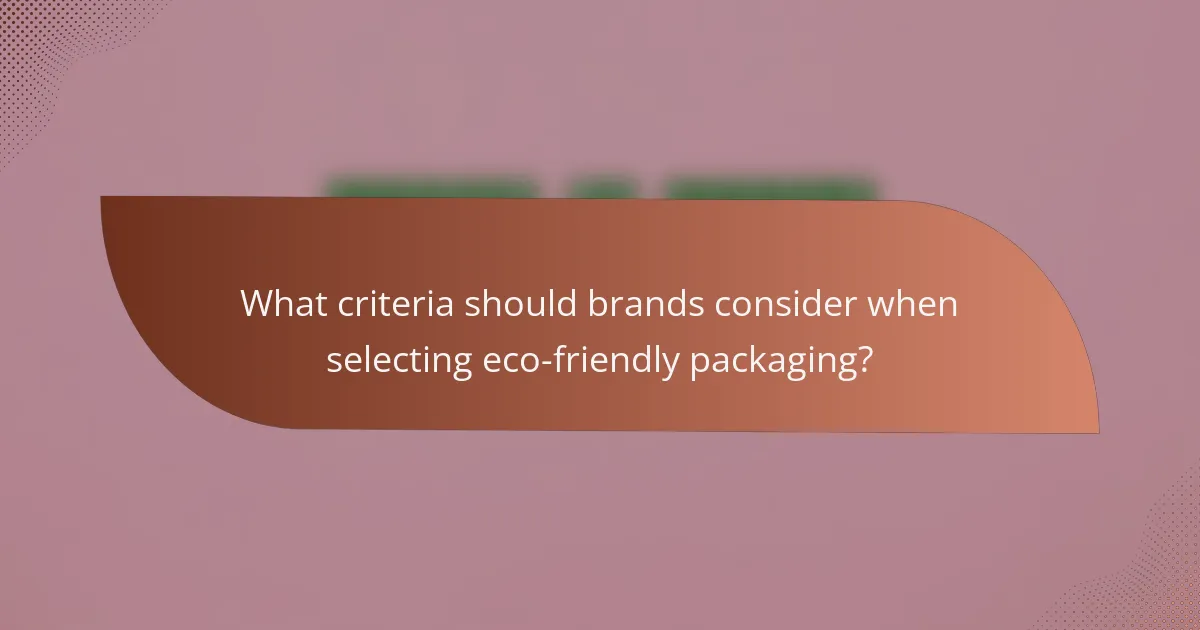
What criteria should brands consider when selecting eco-friendly packaging?
Brands should focus on material sustainability, cost-effectiveness, and consumer perception when selecting eco-friendly packaging. These criteria help ensure that packaging choices align with environmental goals while remaining practical and appealing to customers.
Material sustainability
Material sustainability refers to the use of renewable, biodegradable, or recyclable materials in packaging. Brands should prioritize materials that have a lower environmental impact, such as plant-based plastics or recycled paper, which can significantly reduce waste.
Consider certifications like FSC (Forest Stewardship Council) for paper products or compostability standards for biodegradable materials. These certifications can guide brands in selecting genuinely sustainable options and help build consumer trust.
Cost-effectiveness
Cost-effectiveness involves balancing the expenses associated with eco-friendly packaging against potential savings and benefits. While sustainable materials may have higher upfront costs, they can lead to long-term savings through reduced waste disposal fees and improved brand loyalty.
Brands should evaluate the total cost of ownership, including production, transportation, and disposal costs. Conducting a cost-benefit analysis can help determine if the investment in eco-friendly packaging is justified based on projected sales and customer demand.
